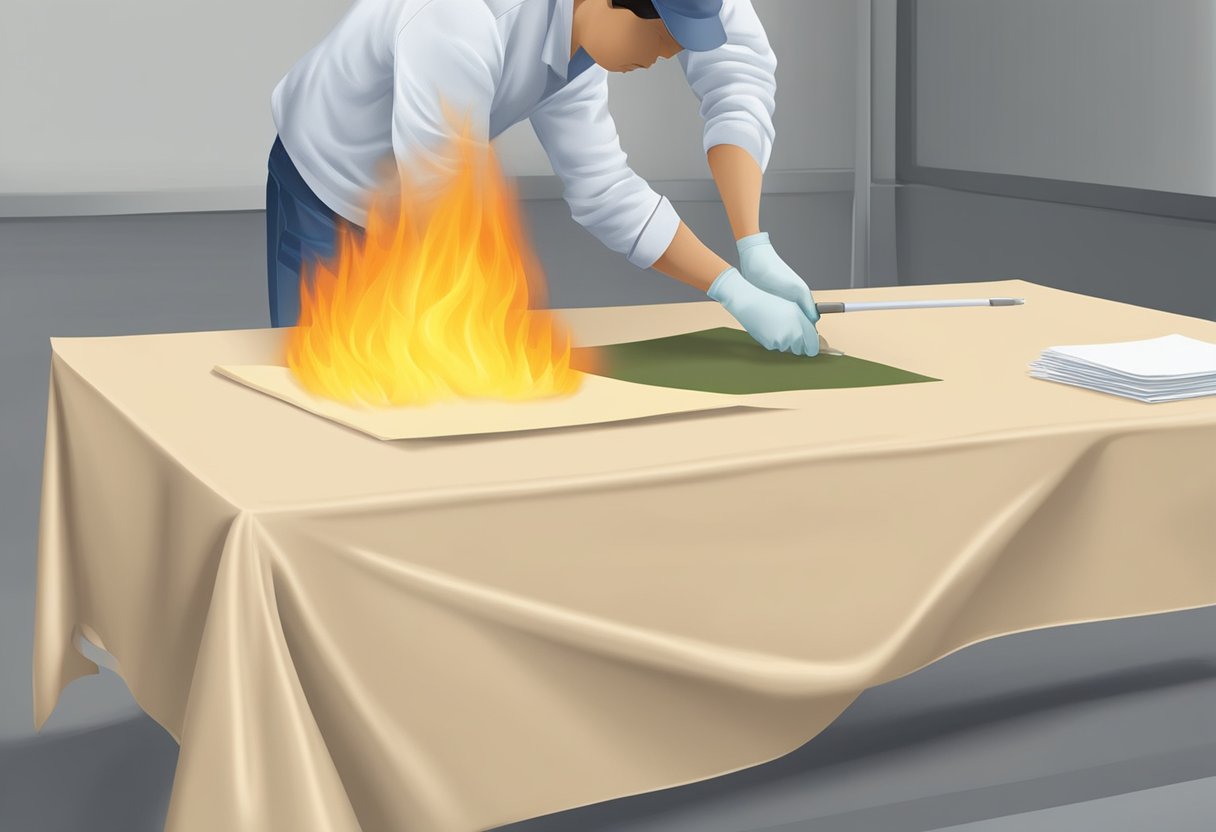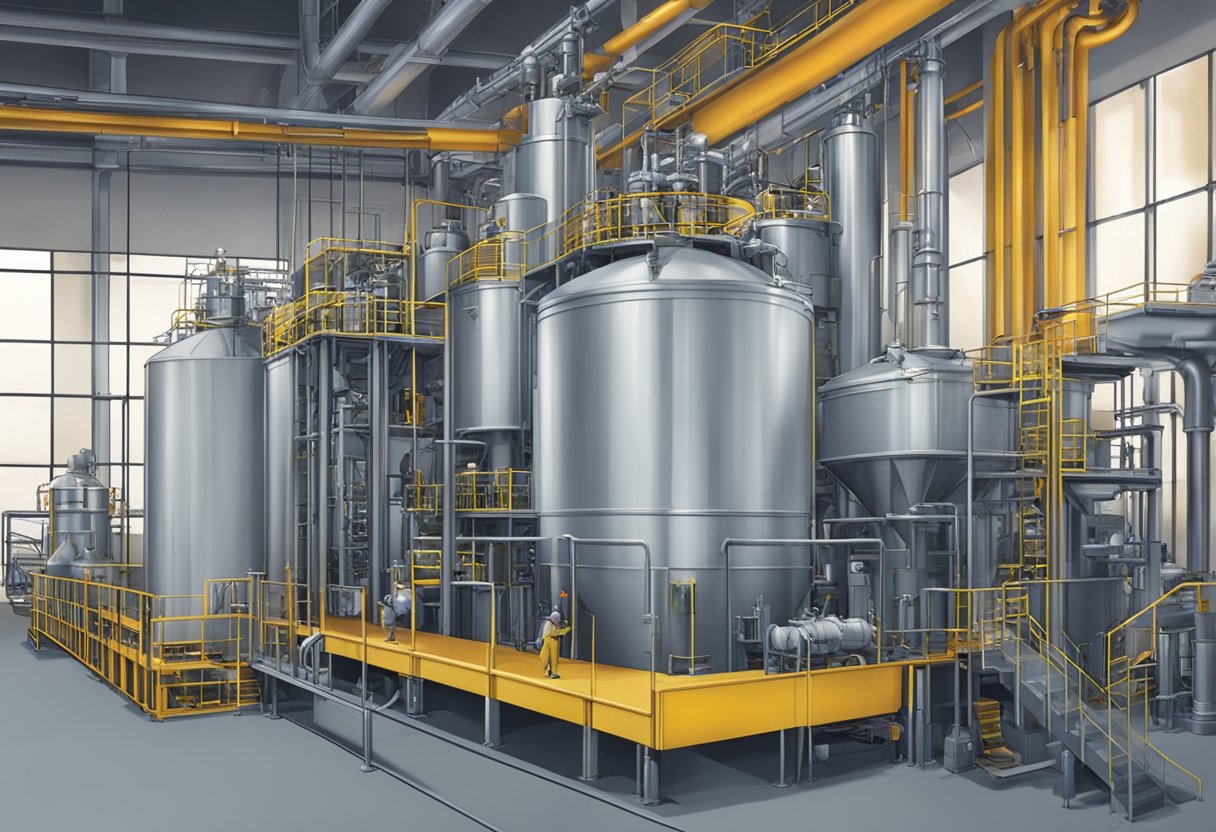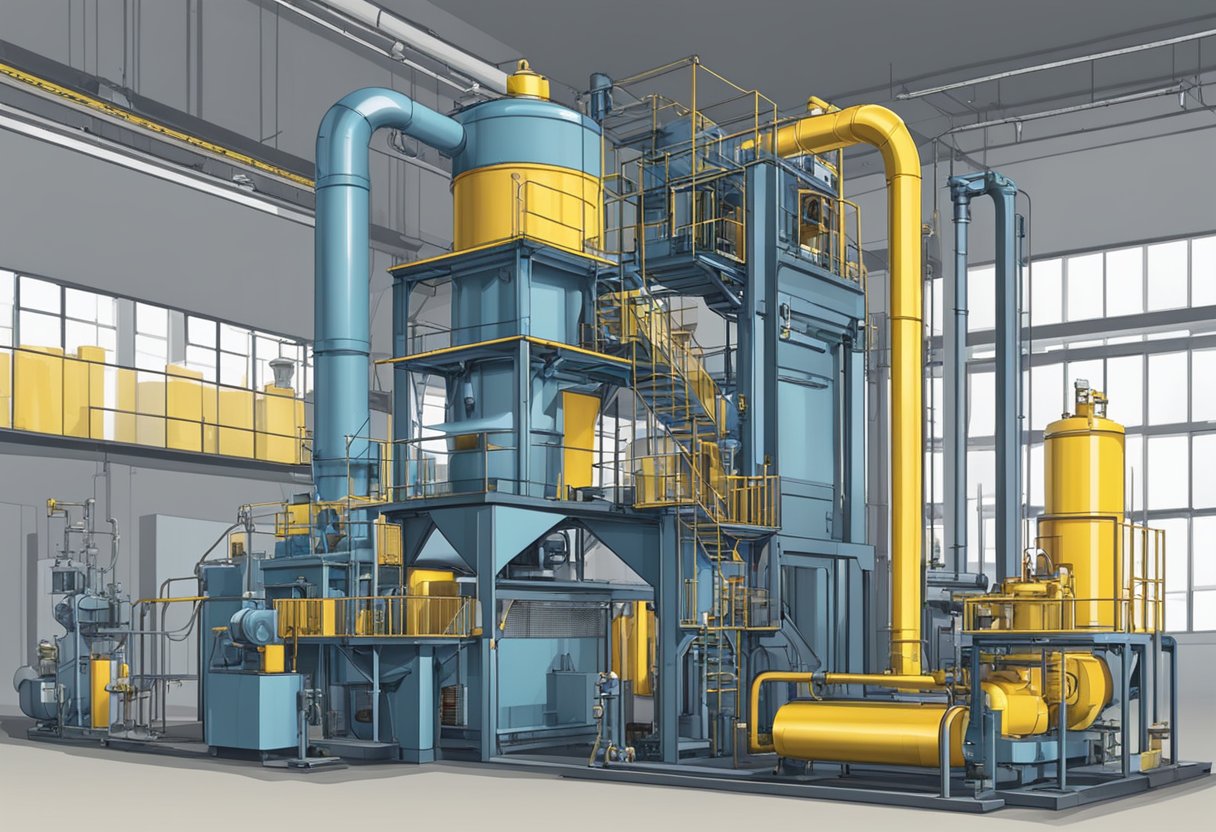Antiscorching: Preventing Thermal Degradation in Rubber Compounds
19/01/2024
Antiscorching is a term used in the rubber industry to describe the process of preventing premature vulcanization or scorching of rubber compounds during processing. This phenomenon occurs when the rubber compound is exposed to high temperatures for an extended period of time, causing cross-linking to occur before the compound is fully processed. This can result in a variety of issues such as poor quality, decreased productivity, and increased costs.

To prevent scorching, antiscorching agents are added to rubber compounds. These agents work by delaying the onset of vulcanization, allowing the compound to be processed at higher temperatures for longer periods of time without premature cross-linking. Antiscorching agents can be classified into two categories: primary and secondary. Primary antiscorching agents function by reacting with the accelerator to form a complex that is less reactive than the accelerator alone. Secondary antiscorching agents work by capturing and neutralizing free radicals that are generated during the vulcanization process.
Antiscorching agents are essential in the rubber industry as they help to ensure that rubber compounds are processed efficiently and effectively. Without the use of antiscorching agents, scorching can occur, leading to a range of issues that can impact the quality and performance of the final product. As such, antiscorching agents play a crucial role in the production of high-quality rubber products.
Antiscorching Agents

Definition
Antiscorching agents, also known as pre-vulcanization inhibitors (PVI), are chemical compounds added to rubber compounds to prevent scorching during processing. Scorching occurs when the rubber compound starts to vulcanize prematurely, leading to a reduction in the physical properties of the final product.
Antiscorching agents work by reacting with the accelerator, which is responsible for initiating the vulcanization process. This reaction slows down the vulcanization process, allowing for more time to process the rubber compound without scorching.
Chemical Composition
Antiscorching agents are typically made up of nitrogen-containing organic compounds, such as N-phenyl-N-(trichloromethylthio)benzenesulfonamide (PCTB), N-(cyclohexylthio)phthalimide (CTP), and N-(1,3-dimethylbutyl)-N’-phenyl-p-phenylenediamine (6PPD). These compounds are added to the rubber compound in small amounts, typically less than 1% by weight.
In addition to their antiscorching properties, some antiscorching agents also have antioxidant properties, which can improve the aging resistance of the final product. However, it is important to note that excessive use of antiscorching agents can lead to a reduction in the physical properties of the final product, such as tensile strength and elongation at break. Therefore, it is important to carefully balance the amount of antiscorching agent used with the desired physical properties of the final product.
Application in Rubber Processing

Antiscorching agents are widely used in the rubber industry to prevent premature vulcanization during processing. This section will discuss the two main areas where antiscorching agents are applied in rubber processing: Rubber Compounding and Vulcanization Process.
Rubber Compounding
Antiscorching agents are added to rubber compounds during the mixing stage to prevent scorching or premature vulcanization. The agents work by delaying the onset of vulcanization, allowing the compound to be processed at higher temperatures and for longer periods of time without the risk of scorching. This results in improved processing efficiency and reduced waste.
Vulcanization Process
During the vulcanization process, antiscorching agents are used to prevent scorching of the rubber compound during the initial stages of vulcanization. The agents work by delaying the onset of vulcanization until the temperature and pressure have reached the desired levels. This ensures that the rubber is fully cured and has the desired properties.
Antiscorching agents can be added to the rubber compound or applied as a coating to the surface of the rubber. The choice of application method depends on the specific requirements of the rubber product and the processing conditions.
In conclusion, antiscorching agents play a critical role in the rubber industry by preventing premature vulcanization and improving processing efficiency. With their ability to delay the onset of vulcanization, antiscorching agents have become an essential component of rubber processing.
Types of Antiscorching Agents
PVI (CTP)
PVI (N-(cyclohexylthio) phthalimide), also known as CTP, is one of the most commonly used antiscorching agents. It is a white or yellowish powder that is soluble in acetone, benzene, and carbon disulfide. PVI is effective in preventing scorching of rubber during processing and storage, especially at high temperatures. It works by reacting with the free radicals produced during vulcanization, thereby inhibiting the cross-linking reaction.
Other Common Antiscorching Chemicals
Apart from PVI, there are several other antiscorching agents that are commonly used in the rubber industry. These include:
- MBTS (2-Mercaptobenzothiazole): MBTS is a pale yellow powder that is soluble in alcohol, ether, and benzene. It is used as an accelerator and antiscorching agent in the production of rubber goods.
- CBS (N-Cyclohexyl-2-benzothiazolesulfenamide): CBS is a grayish-white powder that is soluble in benzene, carbon disulfide, and chloroform. It is used as an accelerator and antiscorching agent in the production of rubber goods.
- TMTD (Tetramethylthiuram Disulfide): TMTD is a white or light yellow powder that is soluble in benzene, chloroform, and carbon disulfide. It is used as an accelerator and antiscorching agent in the production of rubber goods.
- DPTT (Dipentamethylene Thiuram Tetrasulfide): DPTT is a light yellow powder that is soluble in chloroform, benzene, and carbon disulfide. It is used as an accelerator and antiscorching agent in the production of rubber goods.
In conclusion, antiscorching agents are an important component of the rubber industry. They help prevent scorching of rubber during processing and storage, thereby improving the quality and durability of rubber products. PVI (CTP) is the most commonly used antiscorching agent, but there are several other chemicals that are also effective in preventing scorching.
Mechanism of Action
Scorch Delay
Antiscorching agents are used to delay the onset of scorching, which is the premature vulcanization of rubber compounds during processing. This delay is achieved by reacting with and deactivating the reactive intermediates that form during vulcanization. The antiscorching agents work by reacting with the sulfur and other reactive species that are produced during the early stages of vulcanization. This reaction leads to the formation of stable intermediates that do not participate in the vulcanization reaction, thereby delaying the onset of scorching.
Improved Processing Safety
In addition to delaying scorching, antiscorching agents can also improve processing safety by reducing the risk of thermal degradation and other processing-related issues. During processing, rubber compounds are subjected to high temperatures and pressures, which can lead to thermal degradation and other forms of degradation. Antiscorching agents can help to prevent these issues by stabilizing the rubber compounds and reducing the formation of reactive intermediates.
Overall, the mechanism of action of antiscorching agents is based on their ability to react with and deactivate the reactive intermediates that form during vulcanization. This reaction leads to a delay in scorching and improved processing safety.
Benefits and Limitations
Extended Scorch Time
Antiscorching agents are used in rubber manufacturing to extend the scorch time, which is the time taken for the rubber to start curing when exposed to heat. This extended scorch time allows for better handling and processing of the rubber, reducing the risk of premature curing and improving the quality of the final product.
Furthermore, antiscorching agents can help prevent scorching during the transportation and storage of rubber materials, ensuring that they remain in good condition until they are ready to be processed.
Potential Drawbacks
While the use of antiscorching agents can provide several benefits, there are also potential drawbacks to consider. For instance, the addition of these agents can increase the cost of production and may affect the physical properties of the rubber.
Moreover, antiscorching agents may not be effective in all situations, and their effectiveness can depend on factors such as the type of rubber being used, the processing conditions, and the specific antiscorching agent being employed.
Overall, while antiscorching agents can be beneficial in certain applications, it is important to carefully consider their use and potential limitations before incorporating them into rubber manufacturing processes.
Industry Usage
Antiscorching agents find their application in various industries to prevent scorching of rubber during processing. Let’s take a look at the two major industries where antiscorching agents are used.
Automotive Industry
The automotive industry is one of the largest consumers of rubber products. Antiscorchings agents are used in the production of tires, belts, hoses, and other rubber products used in the automotive industry. The use of antiscorching agents ensures that the rubber does not scorch during the manufacturing process, resulting in high-quality and durable products.
The use of antiscorchings agents in the automotive industry has increased over the years due to the growing demand for high-performance tires and other rubber products. The use of antiscorchings agents in the production process ensures that the rubber products have good mechanical properties, high-temperature resistance, and excellent durability.
Consumer Goods
Antiscorchings agents are also used in the production of various consumer goods such as footwear, gloves, and other rubber products. The use of antiscorchings agents in the production process ensures that the rubber products have good mechanical properties, high-temperature resistance, and excellent durability.
The use of antiscorchings agents in the production of consumer goods has increased over the years due to the growing demand for high-quality and durable products. The use of antiscorching agents ensures that the rubber products do not scorch during the manufacturing process, resulting in high-quality and long-lasting products.
In conclusion, antiscorching agents find their application in various industries, including the automotive industry and consumer goods industry. The use of antiscorching agents ensures that the rubber products have good mechanical properties, high-temperature resistance, and excellent durability.
Environmental and Health Considerations
Regulatory Aspects
Antiscorching agents are subject to various regulations and guidelines to ensure their safe use and disposal. The Environmental Protection Agency (EPA) regulates the use of antiscorchings agents under the Toxic Substances Control Act (TSCA) and the Resource Conservation and Recovery Act (RCRA). The TSCA requires manufacturers to submit data on the safety of their products, while the RCRA sets standards for the disposal of hazardous waste.
Additionally, antiscorchings agents may be subject to regulations in other countries, such as the European Union’s Registration, Evaluation, Authorization and Restriction of Chemicals (REACH) program. Manufacturers and users of antiscorchings agents should be aware of these regulations and ensure compliance to minimize any negative environmental impact.
Safe Handling Procedures
Antiscorching agents can pose risks to human health if not handled properly. The Material Safety Data Sheet (MSDS) for each product should be consulted for specific handling instructions. Some general guidelines for safe handling of antiscorchings agents include:
- Wearing appropriate personal protective equipment (PPE), such as gloves, goggles, and a respirator, when handling the product
- Avoiding skin and eye contact by washing thoroughly with soap and water if contact occurs
- Storing the product in a cool, dry, and well-ventilated area away from sources of ignition
- Disposing of the product and any contaminated materials in accordance with local regulations
By following these guidelines, manufacturers and users of antiscorchings agents can minimize the risk of harm to themselves and the environment.
Future Trends in Antiscorching Solutions
Innovative Developments
The antiscorchings industry is constantly evolving, with new developments emerging to address the challenges of modern manufacturing. One of the most promising areas of innovation is the use of nanotechnology. By utilizing nanoparticles, manufacturers can create antiscorchings agents that are more effective and longer-lasting than traditional solutions.
Another area of innovation is the development of antiscorchings agents that are more environmentally friendly. With increasing concern over the impact of manufacturing on the environment, there is a growing demand for antiscorchingS solutions that are sustainable and non-toxic.
Market Projections
The antiscorchingS market is expected to continue its steady growth in the coming years. With the increasing demand for high-quality products and the need for more efficient manufacturing processes, the use of antiscorchingS agents is becoming more widespread across a range of industries.
In particular, the automotive and aerospace industries are expected to be major drivers of growth in the antiscorchingS market. As these industries continue to push the boundaries of performance and efficiency, the need for effective antiscorching solutions will only increase.
Overall, the future of antiscorchingS solutions looks bright, with continued innovation and growth expected in the years to come. As manufacturers continue to look for ways to improve their processes and products, the use of effective antiscorchingS agents will remain a key component of modern manufacturing.




